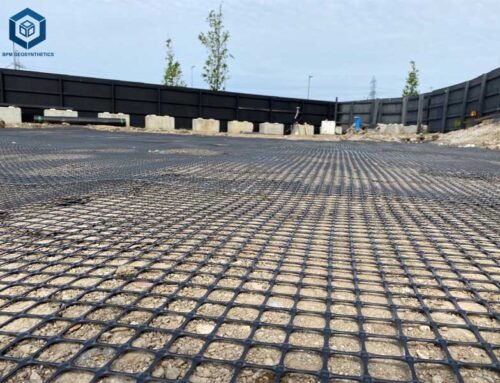Geogrid slope stabilization is a critical engineering technique used to reinforce and stabilize natural or man-made slopes, preventing erosion, landslides, and other forms of slope failure. This method has become increasingly vital in civil engineering projects, particularly in areas with challenging terrain or where soil stability is a concern. BPM Geosynthetics, a leading name in the geosynthetics industry, offers a wide range of high-quality geogrid products designed to enhance the mechanical properties of soil, thereby improving the overall stability and longevity of slopes. By integrating advanced materials and innovative design, BPM Geosynthetics provides effective solutions that address the complexities of modern construction and environmental challenges, ensuring safer and more durable infrastructure.
1. Introduction – Geogrid Slope Stabilization
Slope stability is a critical concern in numerous civil engineering projects, including highway construction, building foundations on hilly terrains, and land development near mountains or riverbanks. Unstable slopes can lead to catastrophic events such as landslides, which endanger lives, damage infrastructure, and disrupt economic activities. Geogrid slope stabilization has emerged as a highly effective technique to reinforce slopes and mitigate these risks.
2. The Basics of Geogrids
Geogrids are synthetic materials, typically made from polymers like high-density polyethylene (HDPE) or polypropylene. They consist of a grid-like structure with apertures or openings of varying sizes. These grids can be either uniaxial, providing strength predominantly in one direction, or biaxial, offering reinforcement in two perpendicular directions. The grid elements are interconnected, forming a continuous network that imparts unique mechanical properties.
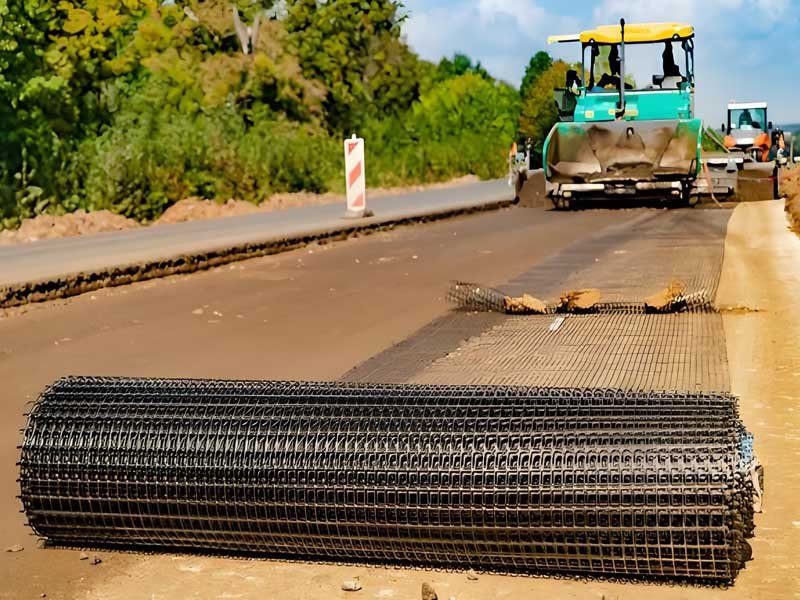
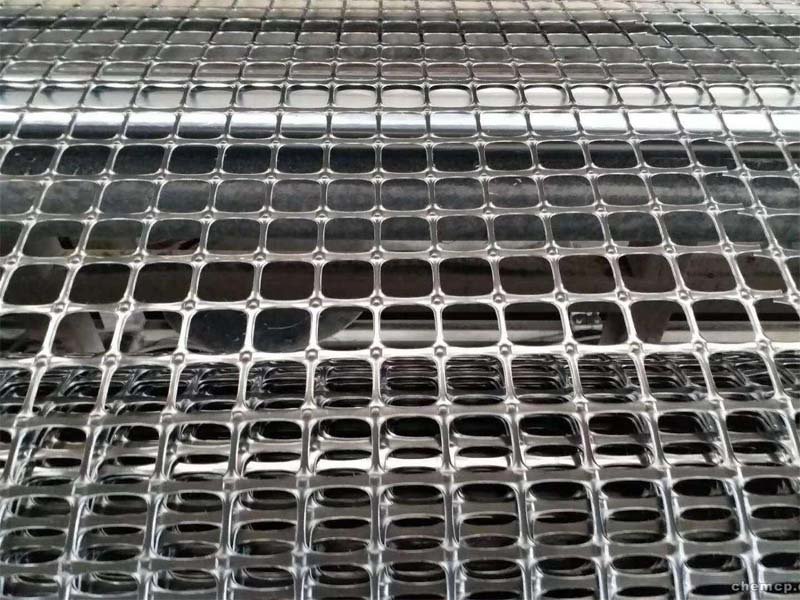
3. Principles of Geogrid Slope Stabilization
3.1 Mechanical Interlock
When geogrids are installed within a soil mass on a slope, the soil particles interact with the grid apertures. As the soil tries to move under the influence of gravity or other external forces, the grid elements resist displacement. The irregularities of the soil grains get caught within the grid openings, creating a mechanical interlock. This interlocking mechanism transfers shear stresses from the soil to the geogrid, preventing the soil layers from sliding relative to each other.
3.2 Tension Membrane Effect
Geogrids also function as tension membranes. When a slope is on the verge of failure, the geogrid stretches and develops tensile forces. It acts like a flexible sheet that holds the soil together, distributing the applied loads more evenly across the slope surface. This tension membrane effect counteracts the downhill movement of soil, adding an extra layer of stability.
4. Components of a Geogrid Slope Stabilization System
4.1 Geogrid Material
As mentioned earlier, the choice of geogrid material depends on factors such as project requirements, soil conditions, and environmental exposure. HDPE geogrids are known for their excellent chemical resistance and durability, making them suitable for long-term applications in harsh environments. Polypropylene geogrids, on the other hand, offer good flexibility and are often cost-effective.
4.2 Soil Reinforcement Fill
The soil used to backfill over the geogrid plays a vital role. It should be well-compacted and possess suitable engineering properties. Coarse-grained soils like gravels are commonly preferred as they provide better interlocking with the geogrid and have good drainage characteristics, reducing pore water pressure that could otherwise destabilize the slope.
4.3 Connectors and Fasteners
To ensure the geogrid functions optimally, connectors and fasteners are used to join different sections of the grid and anchor it firmly to the slope. These can include steel stakes, geotextile nails, or specialized clips. Their proper installation is crucial to maintain the integrity of the entire stabilization system.
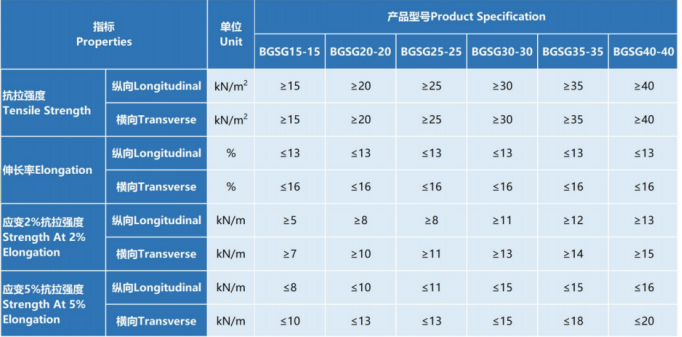
5. Installation Process
5.1 Site Preparation
Before installing geogrids, the slope surface must be cleared of loose debris, vegetation, and any weak soil layers. The slope should be graded to the desired angle, ensuring proper drainage is incorporated to prevent water accumulation.
5.2 Geogrid Placement
The geogrid sheets are unrolled carefully along the slope, starting from the bottom and working upwards. Each sheet is overlapped with the adjacent one by a specified amount, usually determined by engineering design, to ensure continuity of reinforcement. The grids are then anchored at the edges using the appropriate connectors.
5.3 Backfilling and Compaction
Once the geogrid is in place, the selected soil fill is placed in layers over it. Each layer is compacted to a specified density using heavy machinery like rollers. Compaction is carried out in a way that avoids damaging the geogrid while ensuring good soil-grid interaction.
6. Advantages of Geogrid Slope Stabilization
6.1 Cost-Effectiveness
Compared to traditional slope stabilization methods like massive retaining walls or soil nailing, geogrid systems can be more economical. They require less construction material and labor, especially for large-scale slope projects, reducing overall project costs significantily.
6.2 Versatility
Geogrids can be adapted to various slope geometries and soil conditions. Whether it’s a steep cut slope, a natural hillside, or a fill slope, the flexibility in grid design and installation allows for customized solutions, making it suitable for a wide range of applications.
6.3 Environmental Friendliness
Since geogrids are made from synthetic polymers that are chemically inert and do not leach harmful substances into the soil or water, they have minimal environmental impact. Additionally, their installation causes less disturbance to the surrounding ecosystem compared to more intrusive construction techniques.
6.4 Long-Term Durability
With proper installation and material selection, geogrid slope stabilization systems can last for decades. They are resistant to biological degradation, corrosion, and most weathering processes, ensuring the long-term stability of the reinforced slopes.
7. Applications in Real-World Projects
7.1 Highway Embankments
In highway construction, many embankments are built on sloping ground. Geogrids are used to reinforce the soil beneath the roadway, preventing slope failures that could damage the pavement and endanger traffic. They allow for steeper embankment slopes, saving valuable land space and reducing the need for extensive earthmoving.
7.2 Mining Operations
Open-pit mines often face challenges with unstable slopes due to the excavation process. Geogrid stabilization helps maintain the integrity of the mine slopes, reducing the risk of landslides that could halt operations, damage equipment, and pose risks to miners’ lives.
7.3 Coastal Protection
Near coastlines, erosion and wave action can undermine slopes. Geogrids, combined with appropriate vegetation and riprap, are employed to stabilize dunes and shoreline slopes, protecting coastal infrastructure and habitats from the erosive forces of the sea.
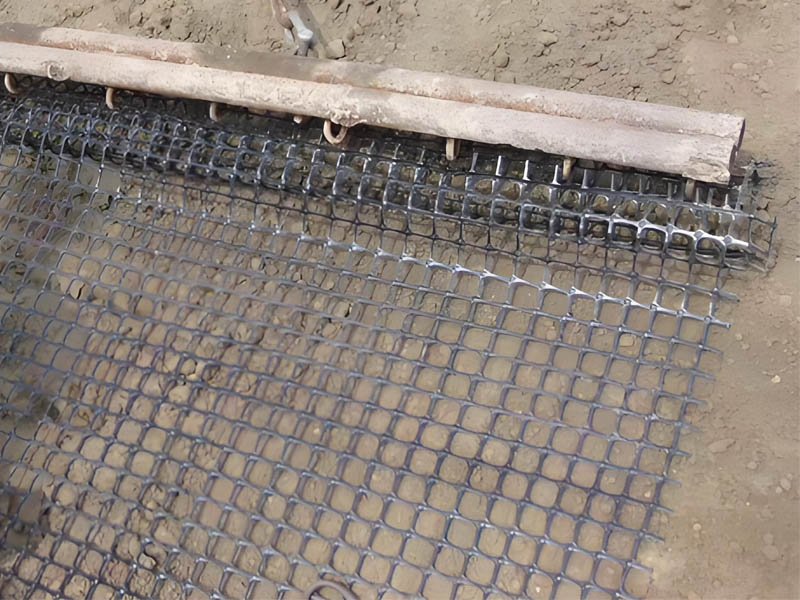
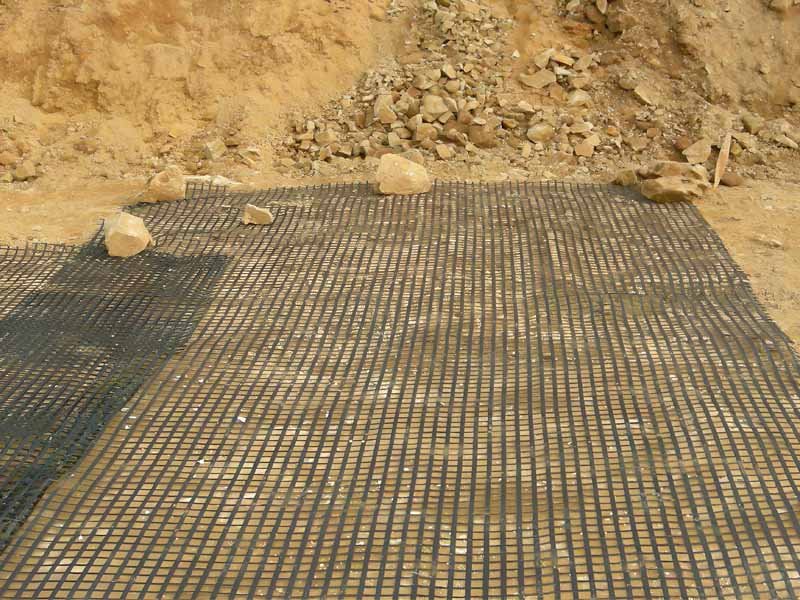
8. Challenges and Limitations
8.1 Design Complexity
Proper design of a geogrid slope stabilization system requires detailed knowledge of soil mechanics, geogrid properties, and site-specific conditions. Incorrect design assumptions can lead to underperformance or even slope failure. Engineers need to conduct comprehensive geotechnical investigations and use advanced design software to ensure optimal results.
8.2 Installation Quality Control
The effectiveness of geogrid stabilization heavily relies on the quality of installation. Poorly installed grids, improper overlaps, or inadequate anchoring can compromise the system’s performance. Stringent quality control measures during construction, including regular inspections and testing, are essential to avoid these issues.
8.3 Compatibility with Soils
In some cases, certain soil types with very fine particles or high plasticity may not interact well with geogrids. Special soil treatment or the use of additional geosynthetic materials might be necessary to enhance compatibility and ensure the desired stabilization effect.
9. Future Trends
As technology advances, the future of geogrid slope stabilization looks promising. Research is focused on developing even stronger and more durable geogrid materials with enhanced soil adhesion properties. Additionally, the integration of smart sensors within geogrids is being explored to monitor slope conditions in real-time, providing early warnings of potential instability and enabling proactive maintenance.
10. Conclusion
Geogrid slope stabilization is a vital geotechnical solution that has revolutionized the way slopes are reinforced in civil engineering. By understanding its principles, components, installation processes, and applications, engineers can harness its benefits to create safer, more stable slopes in diverse projects. While it has its challenges, continued research and improved practices are paving the way for more efficient and reliable use of geogrids in slope stabilization, safeguarding infrastructure and lives from the threat of slope failures.

